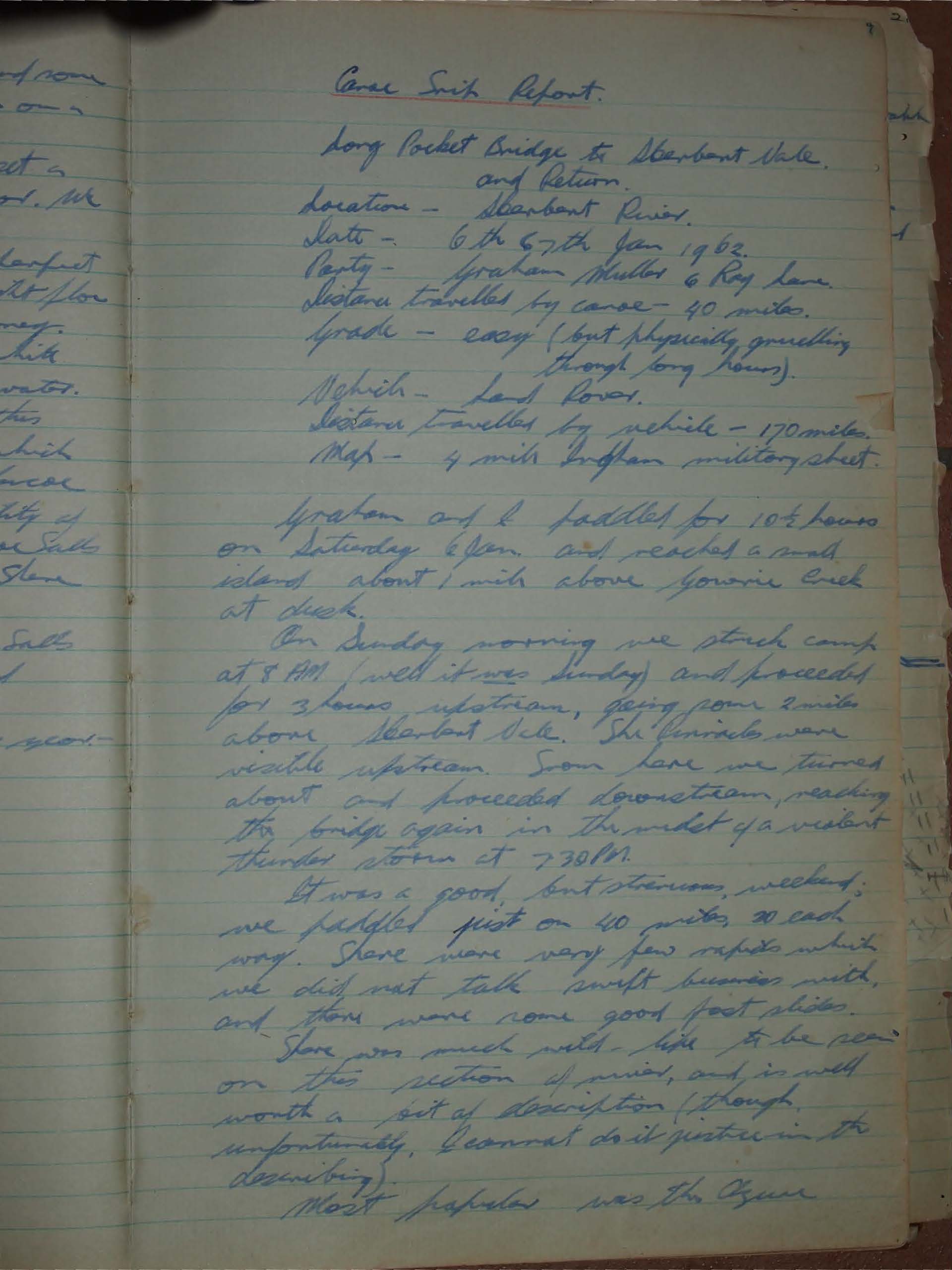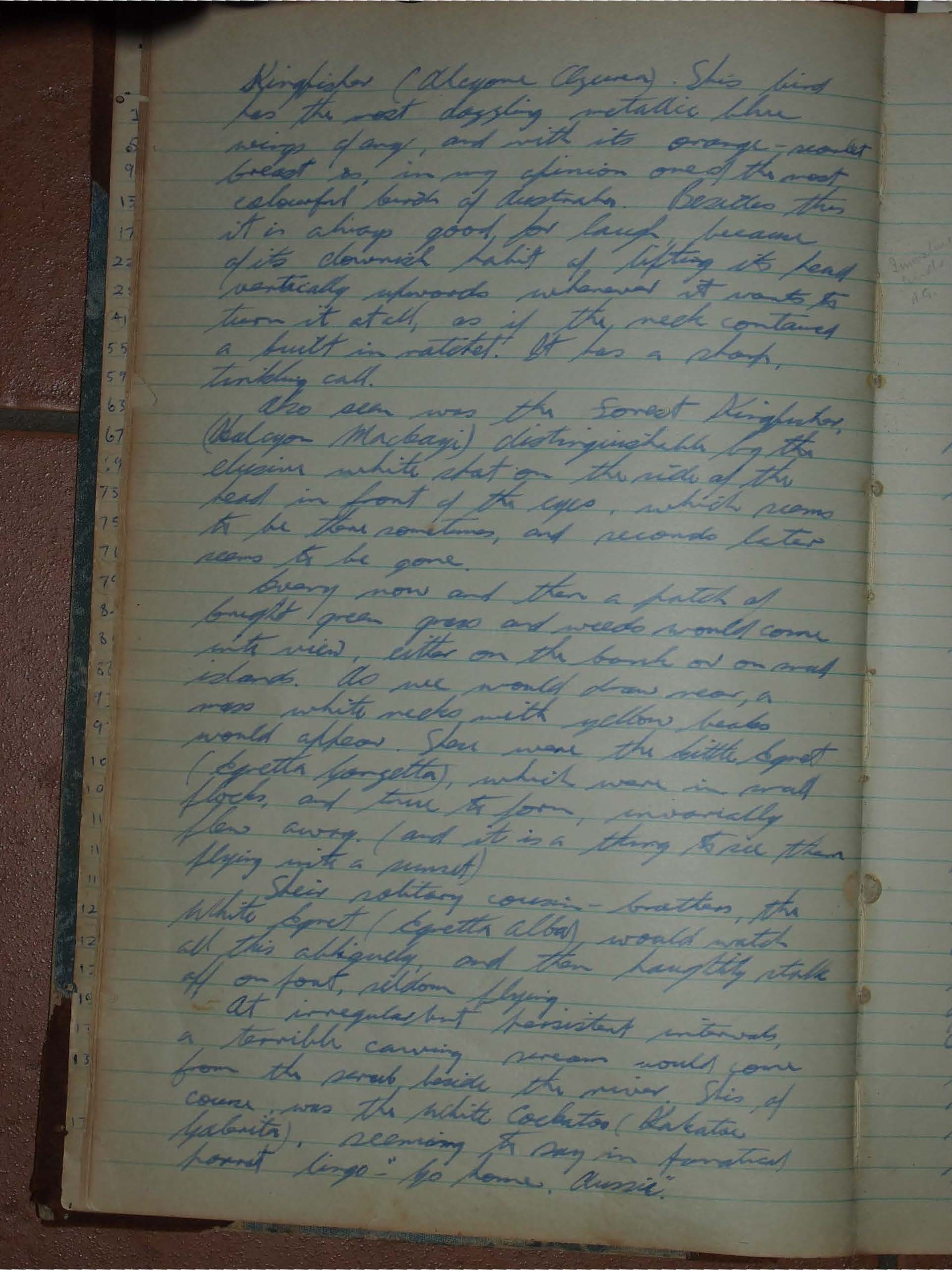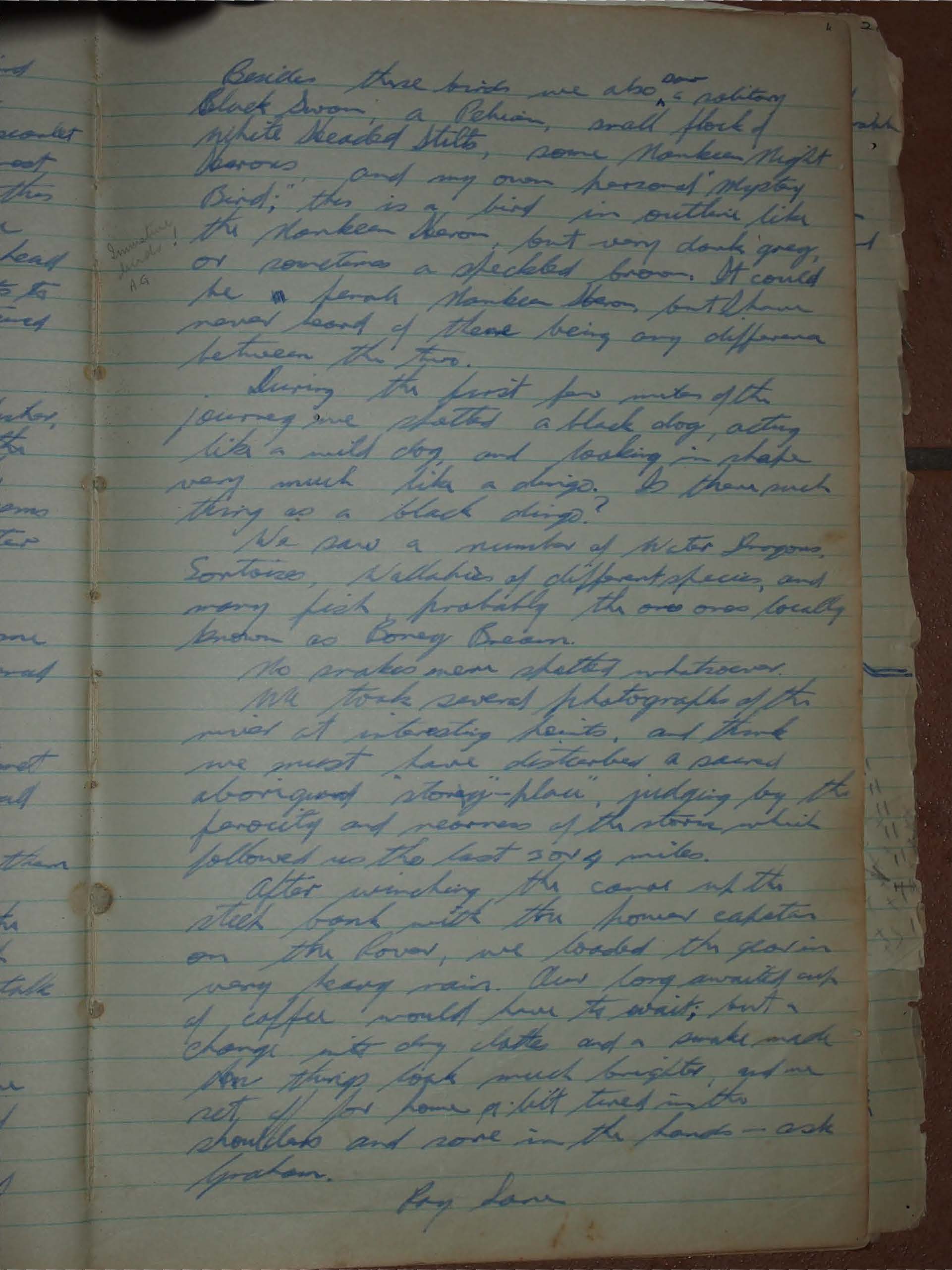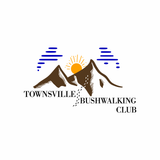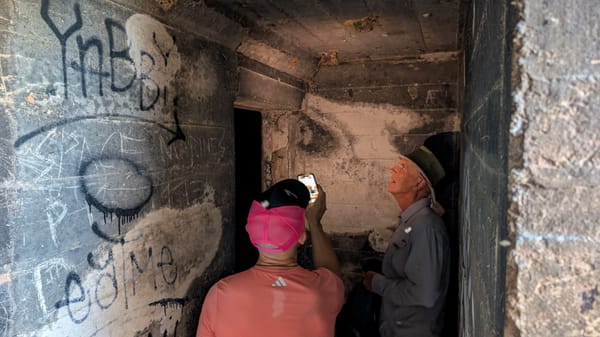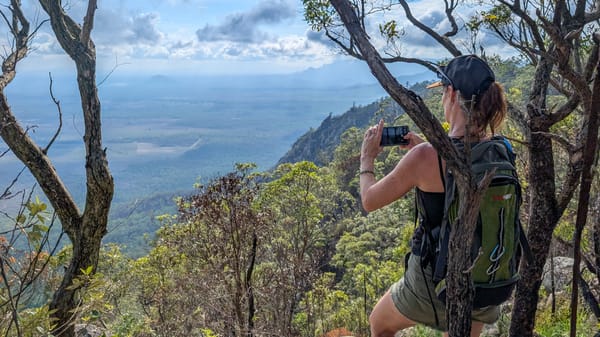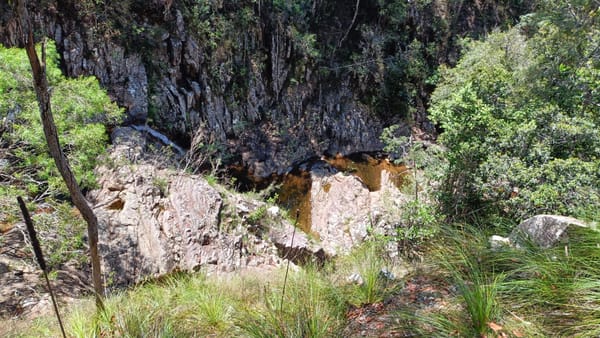Canoe Smith Report
The 1962 Herbert River canoe trip saw Graham Muller and Roy Lane paddle 40 miles from Long Pocket Bridge to Herbert Vale and back. A gruelling but rewarding journey, featuring kingfishers, egrets, pelicans, wallabies, and wild river scenery - an epic North Queensland adventure.
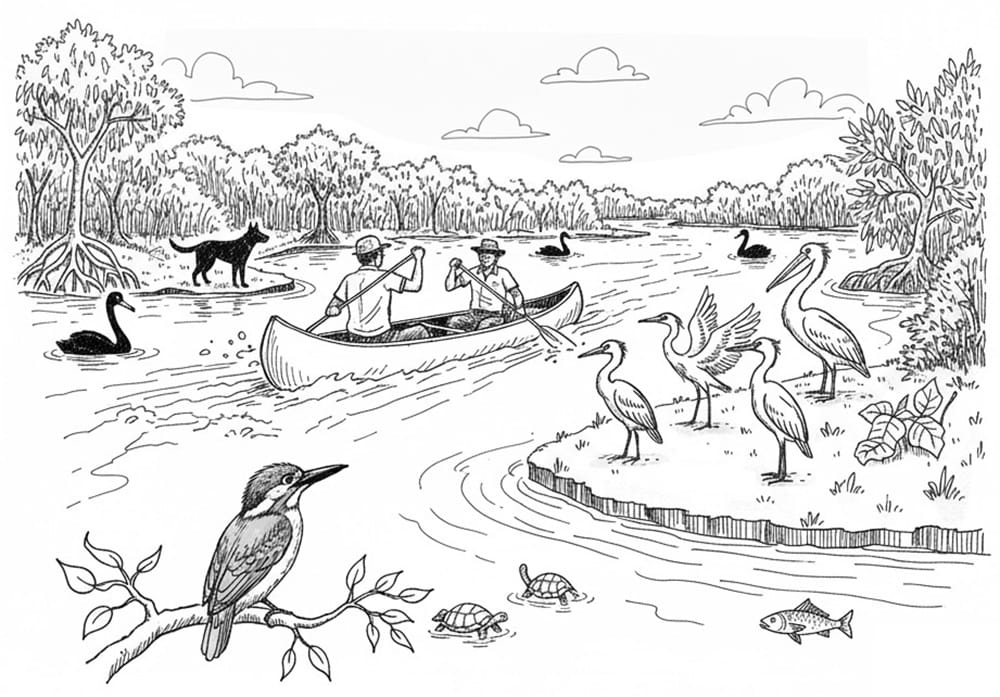
Long Pocket Bridge to Herbert Vale and Return
Location - Herbert River.
Date - 6th & 7th Jan 1962.
Party - Graham Muller & Roy Lane.
Distance travelled by canoe - 40 miles.
Grade - easy (but physically gruelling through long hours).
Vehicle - Land Rover.
Distance travelled by vehicle - 170 miles.
Map - 4 mile Brisbane military sheet.
Graham and I paddled for 10 1/2 hours on Saturday 6 Jan. and reached a small island about 1 mile above Gowrie Creek at dusk.
On Sunday morning we struck camp at 8 AM (well it was Sunday) and proceeded for 3 hours upstream, getting some 2 miles above Starbout Nale. The Pinnacles were visible upstream. From here we turned about and proceeded downstream, reaching the bridge again in the midst of a violent thunder storm at 7.30 PM.
It was a good, but strenuous, weekend: we paddled just on 40 miles, 20 each way. There were very few rapids, which we did not tackle swift business with, and there were some good fast slides.
There was much wild-life to be seen on this section of river, and is well worth a bit of description (though, unfortunately, I cannot do it justice in the describing).
Most priceless was the Azure Kingfisher (Alcyone Azurea). This bird has the most dazzling metallic blue wings of any, and with its orange-scarlet breast is, in my opinion one of the most colourful birds of Australia. Besides this it is always good for laugh because of its clownish habit of lifting its head vertically upwards whenever it wants to turn it at all, as if the neck contained a built in ratchet. It has a sharp, tinkling call.
Also seen was the Forest Kingfisher, (Halcyon Macleayi) distinguishable by the elusive white spot on the side of the head in front of the eyes, which seems to be there sometimes, and seconds later seems to be gone.
Every now and then a patch of bright green grass and weeds would come into view, later on the bank of an oval island. As we would draw near, a mass white necks with yellow beaks would appear. These were the Little Egret (Egretta garzetta), which were in small flocks, and true to form, invariably flew away. (and it is a thing to see them flying with a sunset).
Their solitary cousin-brother, the White Egret (Egretta alba) would watch all this agitatedly, and then haughtily stalk off on foot, seldom flying.
At irregular but persistent intervals, a terrible cawing scream would come from the scrub beside the river. This of course, was the White Cockatoo (Kakatoe galerita), seemingly to say in Forest lingo- "Go home, Aussie."
Besides these birds we also noticing Black Swan, a Pelican, small flock of White Headed Stilts, some Nankeen Night Herons, and my own horror of mystery Bird; this is a bird in outline like the Nankeen Heron but very dark grey, or sometimes a speckled brown. It could be a female Nankeen Heron, but I have never heard of there being any difference between the two. Immature kind? A.G.
During the first few miles of the journey we sighted a black dog, acting like a wild dog and looking in shape very much like a dingo. Is there such a thing as a black dingo?
We saw a number of Water Dragons, Some Tortoises, Wallabies of different species, and many fish, probably the ones locally known as Bony Bream.
No snakes were sighted whatever.
Mr York took several photographs of the most interesting points, and I think we must have disturbed a sacred aboriginal “stone-place”, judging by the ferocity and nearness of the storm which followed us the last 3 or 4 miles.
After winching the car up the steep bank with the pioneer capstan on the Rover, we loaded the gear in very heavy rain. Our long awaited cup of coffee would have to wait, but a change into dry clothes and a smoke made things look much brighter and we set off for home a bit tired in the shoulders and sore in the hands – ask Graham.
Roy Dann
